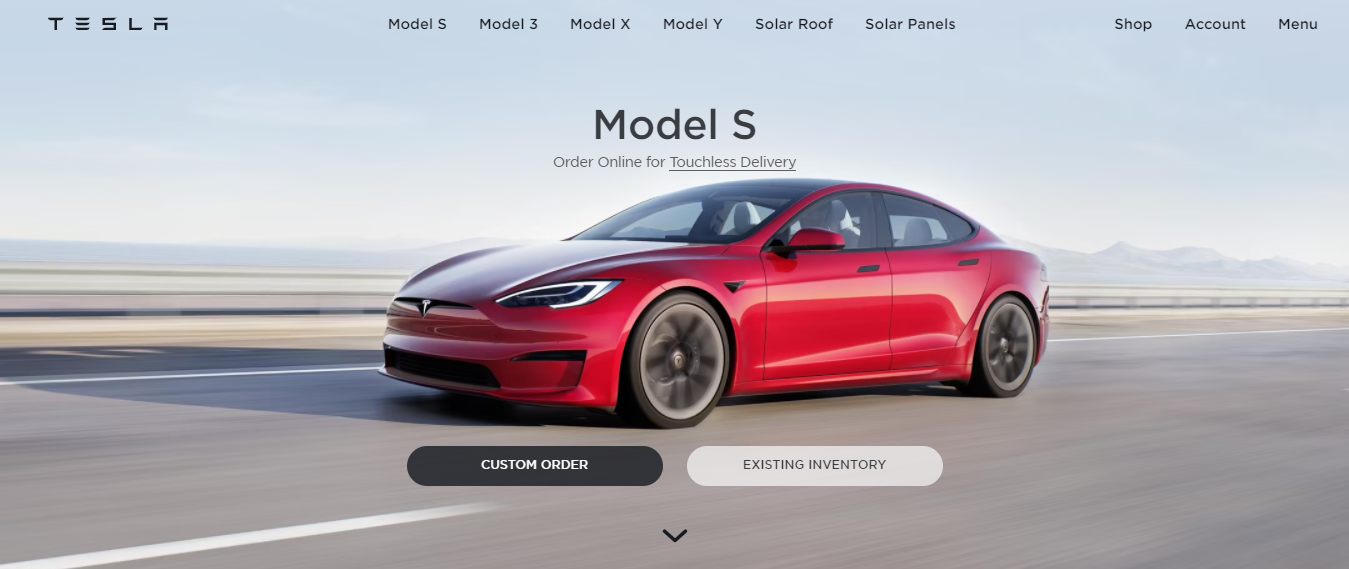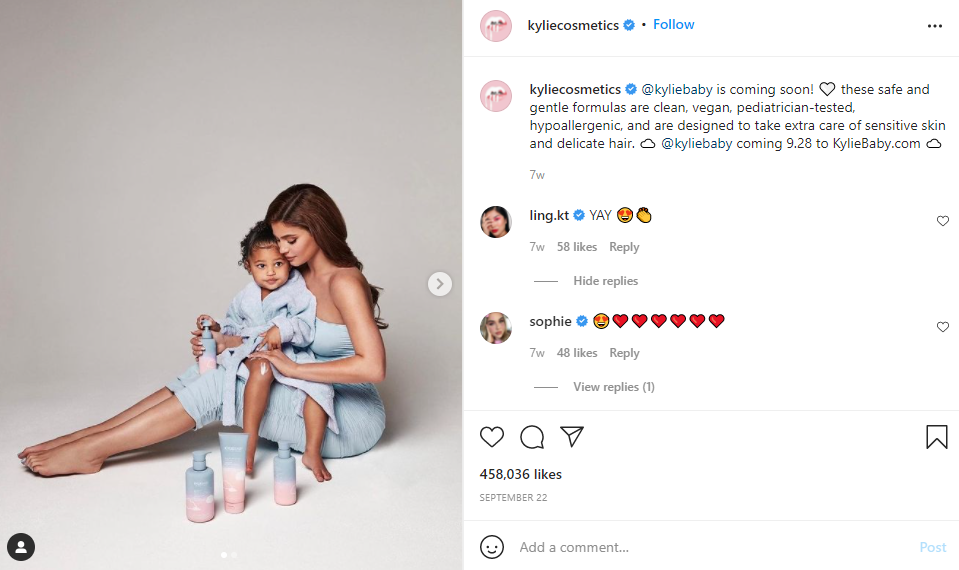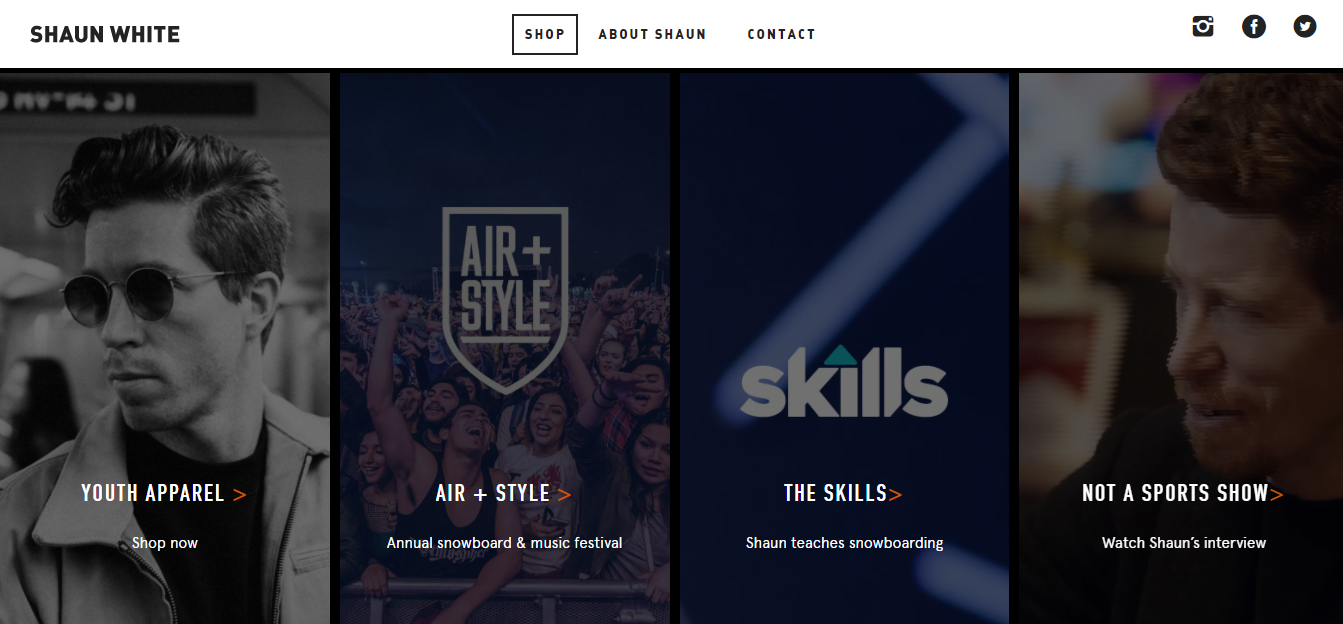Personal branding is a marketing approach that centers around a certain person and their unique experience, popularity, knowledge, and expertise. It helps a company stand out from the competition, have a bigger influence, and establish authority and influence.
In the video below, Anya shares the core steps to creating an outstanding personal brand. Check it out!
In this article, we’ll unveil the importance, benefits, types, and examples of personal branding. We’ll also explore several practical tips and find out how to build a personal brand.
Why is personal branding important?
Having a personal brand means having something unique that others don’t have: expertise, experience, or extraordinary achievements. They make a company influential, recognizable, and competitive, as personal branding presents an opportunity to show your advantages and strengths.
Creating a personal brand is especially popular among influencers who already have their customers’ love and trust. They can easily use their names and expertise to establish brands people will appreciate. Selena Gomes, Charlotte Tilbury, and Kylie Jenner used their popularity and influence to create world-known makeup brands.
Why is personal branding so popular? The answer is simple: personal brands can be easily recognized, memorized, and recalled. Subscribers can automatically become prospects since they know an influencer well and appreciate this person’s expertise and knowledge. As a result, the influencer has a wide reach and the trust of people all over the world.
Now that you know the reasons to consider creating a personal brand, let’s proceed to the benefits.
Benefits of Personal Branding
Since this type of branding has the power to instantly show the competitive advantage of a company and the solution it can provide to customers, it drives attention. A wide reach allows entrepreneurs to reap many benefits. Your brand will not only stand out in the crowd of competitors but also:
- establish a strong online presence and become visible;
- gain customers’ trust;
- connect with your target audience;
- communicate the value of your product;
- show expertise in your industry;
- expand your reach;
- build a community;
- boost sales;
- increase exposure;
- increase your wealth.
If these advantages make you more curious about personal branding, it’s a good idea to keep exploring and find the best way to build one. In the next section, we’ll uncover several types of personal branding you might be interested in.
Types of Personal Branding
Personal branding isn’t just one of the many marketing strategies that help reach success. It’s the way your target audience perceives your brand and you as an individual. When creating a brand, you should take the task seriously and choose a personal branding type that feels close to you. It will influence the way people perceive your company. To do it, you need to know the main personal branding types.
- Connector. Connectors care about bringing people together and creating communities. These opinion leaders like to communicate with their audience and strive to gather people around them. They are friendly, caring, creative, and open-minded.
- Selective. This group covers brands that target only specific audience segments. Selectives create engaging, quality, and informative content that they share only with certain groups of people.
- Careerist. Careerists’ achievements are their top priority. They do everything to reach them and share information that will help level up and show their expertise. They are thought leaders who have the knowledge and skills people trust. The well-known Elon Musk and Simon Senek are excellent examples of careerist personal brands.
- Altruist. Altruists are committed to helping others. They run foundations or charities and support people in need. They spend their time and effort to make other people’s lives better by helping cure diseases, protecting and supporting victims of harassment, abuse, and inequality, helping homeless people, etc. For example, Oprah Winfrey helps women and children with education, and Marlo Thomas makes donations for children’s cancer research.
- Hipster. True hipsters focus on individuality. Although they combine the characteristics of careerists and altruists, unlike these two branding types, hipsters don’t act. They prefer to share only tried-and-true tips and insights with their audience. These brands are modern, trendy, and unique.
- Boomerang. Boomerangs share controversial information that leads to discussions. Their content is often unexpected, controversial, and provocative. You can encounter many examples of boomerang personal brands on Instagram, including meme accounts like @sarcasm_only or @epicfunnypage. News reporters are also considered boomerang brands.
Once you decide on your personal brand type, proceed to build it step by step.
How do you build a personal brand?
Anyone can build a great personal brand — all you need is access to social media platforms. Instagram, Facebook, and Twitter empower you to create a brand you have been striving for all these years. Establish a positive image, pleasant personality, and firm values that resonate with your target audience. Let’s proceed to our guide to discuss this process in detail.
- Select a niche. Success and wealth come to people who are passionate about their work. They are well-versed in the industry, provide customers with high-quality products, and have expertise, skills, and knowledge. These people are always ready for something new and innovative. To create an outstanding personal brand, think about what you like to do and are good at. For example, you can start a blog about plants if you know great tips on how to take care of them and grow them.
- Think of your unique proposition. Once you select your niche, determine what can help you stand out. Remember that people pay attention to unique, exceptional, and authentic brands. Identify your strengths to define your unique value proposition and communicate it to your audience.
- Identify your target audience. To effectively address consumers’ needs, you should conduct a short survey and explore more about them. Explore the age, occupation, interests, and preferences of your target audience to deliver relevant and personalized information.
- Create an engaging website and social media profiles. Websites are one of the main communication channels. To build one, you can make use of free site builders. Your website should highlight your accomplishments and include your social media profile links, logo, value proposition, and visible CTA buttons. Consider LinkedIn, Twitter, and Instagram for personal branding to increase the likelihood of your brand’s success and make your brand visible to a larger audience.
- Work on your content strategy. Quality content shows your expertise and proves that you are a professional, one of a kind. Eventually, you will gain trust and credibility. Your experience and knowledge will encourage people to share your brand with their friends and family. In this case, you won’t need to pay for advertising because your subscribers will be your free word-of-mouth promoters. Ensure to use the most viral types of content, for example, podcasts, webinars, and online courses to efficiently convey your product value to readers.
It’s time to jump into the tips that will help make your brand successful.
3 Tips for Building a Personal Brand
You can find many personal branding tips that can help you achieve stellar results in business. We’ve picked up the most important ones to remember.
- Create a brand personality. If you have chosen a suitable niche, it’s time to create a brand personality. It should reflect your unique perspective and characteristics that differentiate your brand from hundreds of others. You should know what to say and when and be consistent with your tone of voice.
- Ask opinion leaders to endorse you. Once you establish a clear personality for your brand, you can ask others to promote your company. The best idea is to ask influencers for help. They have the trust and attention of millions of people who are eager to explore new brands. The best platforms for endorsement are Instagram, LinkedIn, and Facebook.
- Establish a strong online presence. Your team, marketing tools, and platforms form a good basis for your brand development. Be active on social media and share different types of content, including captivating photos and videos and compelling posts, to engage your audience. Answer questions to demonstrate your openness to customers.
Hope these tips will help you with your personal branding. Let’s explore our amazing examples to grab some inspiration.
3 Outstanding Personal Branding Examples
There are so many wonderful examples of personal branding that we simply can’t skip. Successful, professional, exceptional, and unique individuals create great personal brands and win people’s trust. If you don’t have any ideas for your personal brand yet, explore some of the most outstanding examples.
Elon Musk
Everybody heard the name Elon Musk, creator of Tesla and SpaceX, at least once. He is often associated with his companies’ names. Elon Musk is a great example of careerist personal branding that represents technology. People will forever remember his electric cars and rockets.

Kylie Jenner
Kylie Cosmetics turned Kylie Jenner into the youngest “self-made” billionaire in the world. The young woman succeeded in creating a cosmetics empire named after her. Kylie, a member of the wealthy Kardashian family, didn’t need opinion leaders to promote her new brand. She could influence people by herself and used her face to demonstrate her product line. The strong social media presence brought excellent results to this young celebrity. Kylie Cosmetics now has 25.5M followers on Instagram and loyal customers worldwide.

Shaun White
Shaun White is famous for his accomplishments in snowboarding and skateboarding. The athlete now has his own clothing brand. The store has everything a sportsman needs.

Simply put, personal branding is closely connected with your identity, personality, and expertise. These examples demonstrate very different yet inspiring personal brands and will help you pave the way for your brand.
References:
- This article defines the term and unveils some personal branding tips and examples.
- In this article, you’ll find a guide on how to build a personal brand.
- This article provides readers with reasons to build personal brands.
Last Updated: 08.02.2024


or